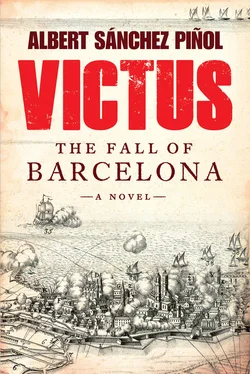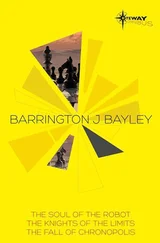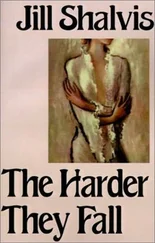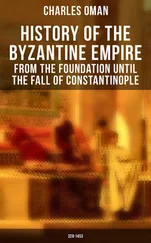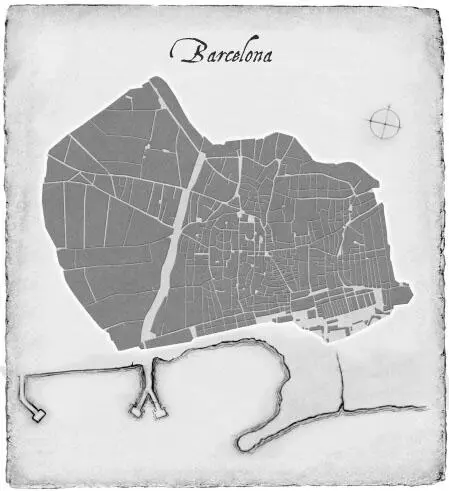
Thanks to his Catholic heritage, every other day in his calendar was a feast day. (The papacy had to have something going for it to have so many followers around the world.) Besides these, we should add the dozens of more or less improvised occasions, such as days of thanksgiving to commemorate the king being restored to health, or because Santa Eulalia had appeared to a drunkard in the street. But make no mistake, if the Catalans encouraged feast days, it was only because they understood that idleness is good business.
The festivities, which the calendar teemed with, cost colossal amounts. Barcelona’s festivals and carnivals were spoken of the world over. Those carnivals! The Castilian aristocrats, all so chaste, would return from their visits scandalized. Rich and poor out on the streets, men and women all together in a throng and dancing till the early hours. Just appalling. To a Castilian nobleman, clothing had to be one color only: the severest black. When I was in Madrid in 1710, I was surprised by the blackness of its patricians. It was the opposite in Barcelona. More than three hundred kinds of fabric were imported, and the more money you had, the more colors you would flaunt in your attire and at the dances.
There was a constant flow of merchandise being unloaded at the harbor. You could find a dozen varieties of ginger alone. When I was a little boy, my father once gave me a thrashing because I’d come back from market with the wrong kind of rice — no wonder I was confused about which he’d sent me for: There were as many as forty-three different varieties of rice, something to suit every purse.
In few places have I seen people smoke as much as I witnessed in Barcelona. In the city’s botigas , it was possible to find an even greater array of tobaccos than there was of rice. Healthy though smoking obviously was, the habit spread to such an extent that the bishop was obliged to pronounce an edict, an ecclesiastical proclamation, no less, forbidding priests from smoking — at least while performing their offices!
In Barcelona in the years before 1714, you always had the impression of a city governed by a tolerant, opulent, libertine kind of chaos. People worked themselves to death and, at the same time, died laughing and merrymaking. On the whole, the government of the Generalitat didn’t meddle when it came to popular excesses. Let me give you one example: the pedradas .
The line dividing popular revelry and mob violence has always been vanishingly thin. When my father was a young lad, the pedradas were the favored pastime of Barcelona’s universities. Essentially, these consisted of a contest between two teams, each made up of a good hundred participants. They’d find some expanse of open land to gather in, and with the two teams on opposite sides, when the signal was given, hunks of stone would begin to be hurled. Thousands of stones went back and forth, and if you could strike an opponent in the head with one of yours, so much the better for you! You will be wondering, perhaps, what sort of rules applied to such a noble pastime? The answer could not be simpler: There were no rules at all. The group who finally fled in terror was considered the loser; the one left on the field, the victor. Naturally, the battle would leave dozens injured, many with their heads split open for life, and even some dead.
The real crybabies among the clergy clamored against the brutishness of the pedradas . Could the competition not be made a little less rough by at least replacing the stones with oranges? At their insistence, the universities assumed a position entirely typical of the Catalans: agreeing without complying. At the start of the civic battles, oranges would be used, but only until these ran out, whereupon the combatants would proceed with stones. The Church was obliged to hold off on the sermonizing because the pedradas were an enormously popular entertainment; crowds came to watch, bets were laid and sides taken. And who among us is unfamiliar with students’ playful ways? Very often, when there was an attentive crowd, instead of attacking each other, the two groups, laughing, would unite to bombard the unsuspecting spectators!
Using the pedradas as their excuse, the students would sometimes designate the area around the university their “field of honor.” Then the two rival groups would form an alliance, feeling fraternal all of a sudden, leaving the building a wreck, outside and in. Lectures would be suspended until the furnishings were replaced, and — who would have thought such a thing, what a coincidence! — it seemed these pedradas always sprang up at the university around exam time. No wonder my father sent me to France; always having been head and shoulders above my peers, and always having been a scoundrel, I would have found my place (my father was sure) in the front line of the stone-throwers, on one side or the other, and would have ended up with my skull smashed in. In any case, during my boyhood, pedradas had already begun to tail off noticeably. But of one thing I am quite sure: If Christ was able to save the blessed prostitute from stoning, it was only because there were no Barcelonan university students around in Judea at the time.
While I’m on the subject of prostitutes, one of the defects of Barcelona in those days, which demonstrates the fathomless perfidy of the “Black Pelts” (as the bishops were commonly called, owing to the color of their cassocks), is that brothels were strictly forbidden. There was a particular watch kept over boardinghouses and inns, and “suspect” women were constantly kept under observation. As far as I can tell, this disproportionate harassment of the city’s pitiful tarts was a kind of concession granted to the Black Pelts on the part of the Red Pelts (the government, in the popular jargon, owing to the crimson color of the robe worn by Catalan magistrates). Since the rich and powerful were quick to ignore sermons against gambling and luxury, the government gave the Church the satisfaction of repressing, at least, those poor, defenseless prostitutes.
Which is not to say there were no whores at all. Of course there were! In cities with brothels, the tarts stay inside and never come out; in cities without any brothels, they spill all over the place and at all hours. With the ancient profession of procurer abolished, aspiring tarts came up with a thousand cunning schemes to allow them to carry out their work in secret.
Anyway, as I was saying, I had been wandering the streets, summoning the courage to return home, when I heard the sound of drums approaching. The crowd, all crushed together on the Ramblas, dropped to their knees.
The news of the fall of Tortosa had arrived in the city before me. On occasions such as that, the Barcelonans carried in procession their most sacred relic: the standard of Santa Eulalia. I hope you will allow me a few words at this point, because the Barcelonans’ precious flag most surely deserves them.
As a banner, it was nothing extraordinary. It was, however, quite different from modern ensigns. The whole large silk rectangle was taken up by the portrait of a young woman, her body violet-colored, with sadness in her eyes. Something about the image was irremediably pagan. The art that had captured the melancholy in her eyes was wonderful.
According to the dictates of tradition, the flag had to be passed on, by hand, from Catalan kings to their firstborn and successor. It was said that an army that flew this flag would never be defeated. (A lie, I say: Catalan history comprises ten sound defeats to every one victory.) In any case, what is certainly true is that the flag of Santa Eulalia provoked feelings of devotion that far outstripped merely military support. As it passed by, the Barcelonans knelt to cross themselves and ask for protection and blessings. If you will allow me to share a thought with you, I can tell you that this reverence had precious little to do with religion. For this ensign was much more than a saint: It was the representative of the city itself.
Читать дальше
